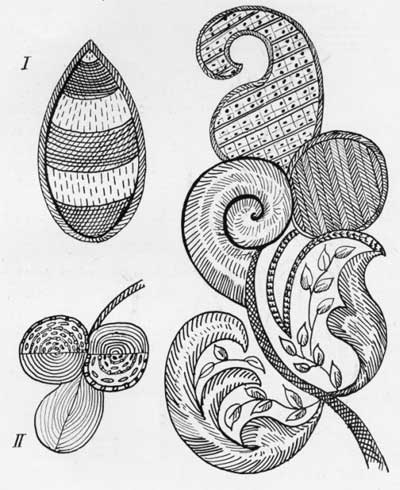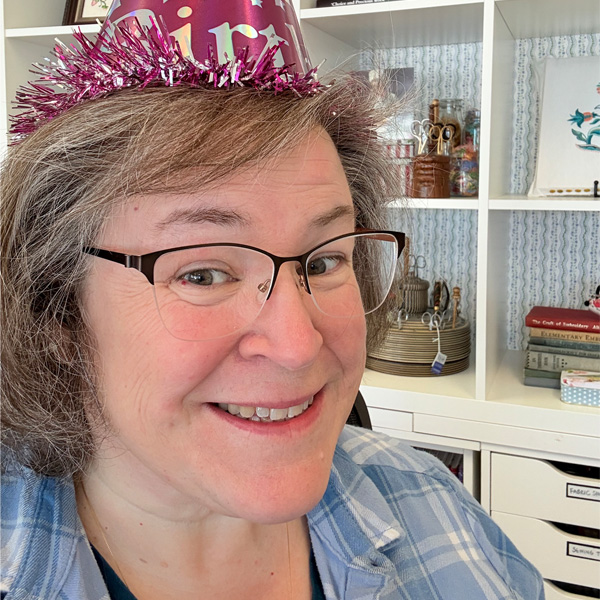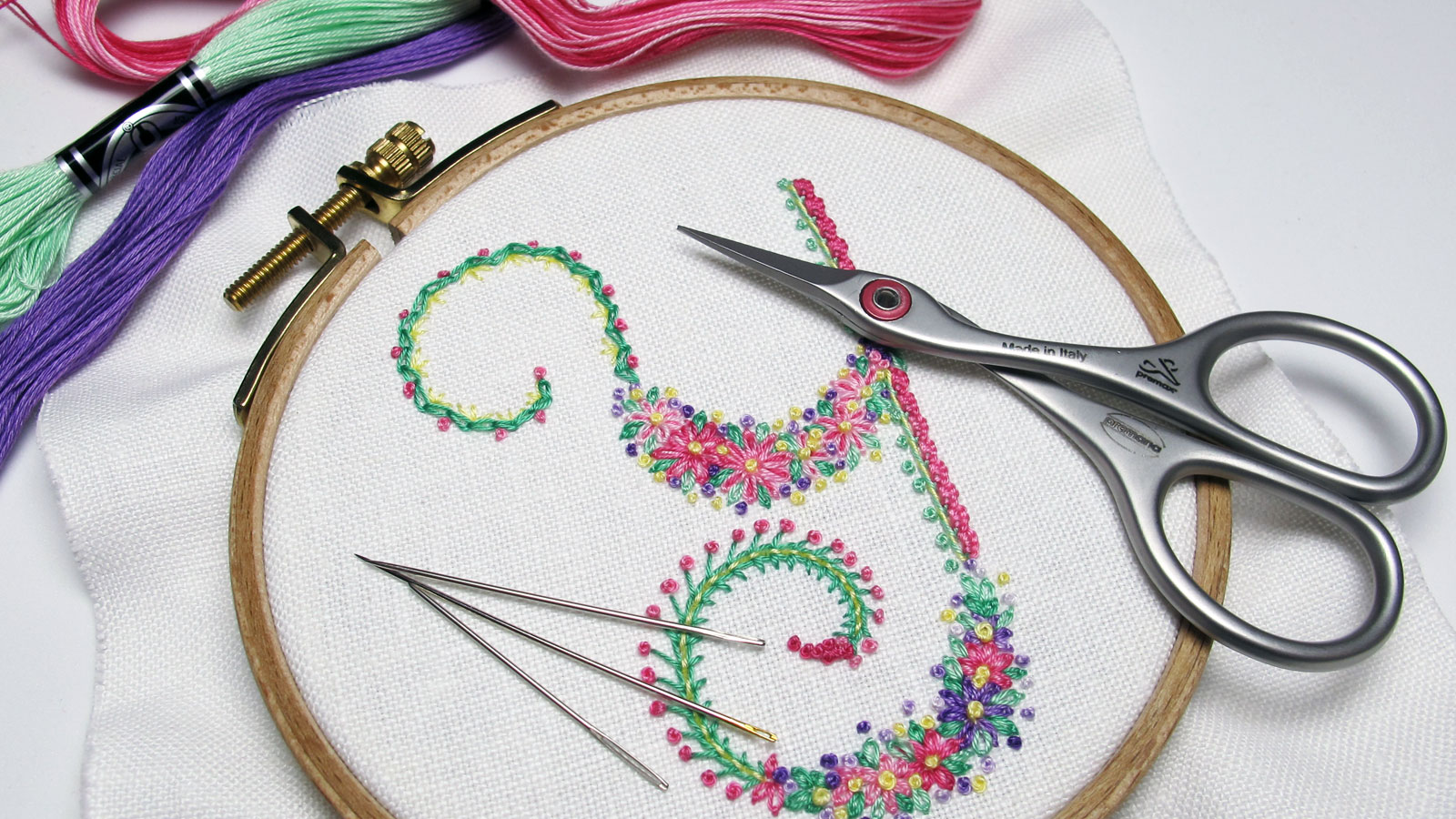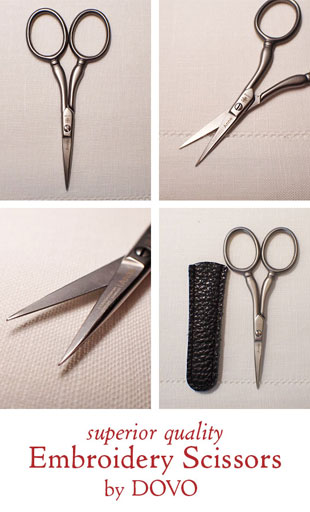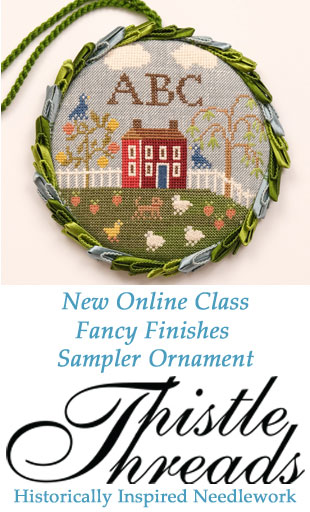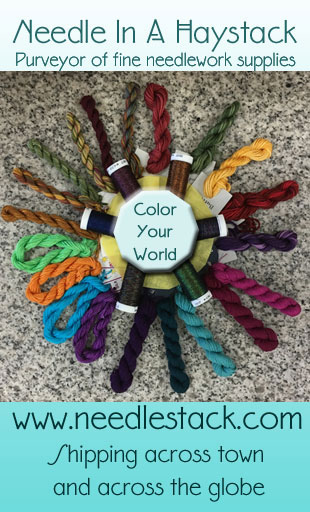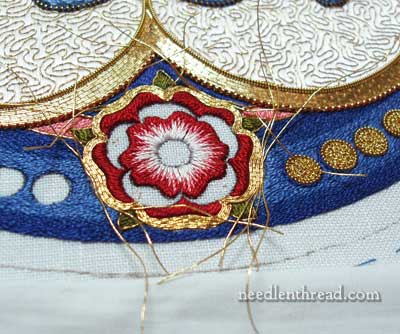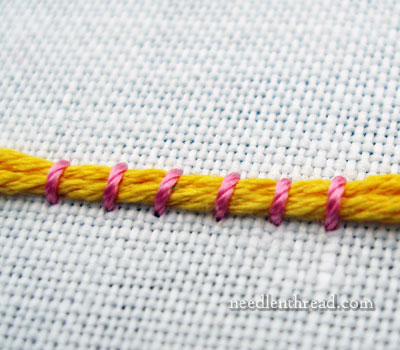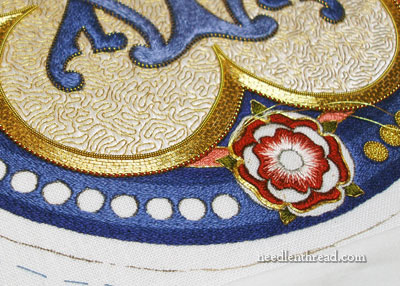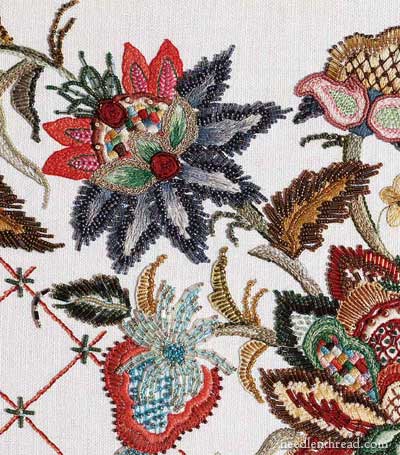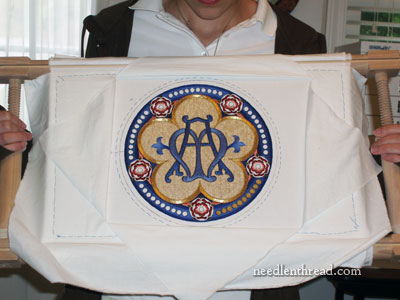How do you store your embroidery threads? This question has troubled me for a while.
Over time, I’ve been investing in complete ranges of threads that I know I will be using in my hand embroidery projects. There are obvious reasons to have the whole set of any given line of thread on hand, the primary one being that threads are to the embroiderer what paints, pencils, pens, or crayons are to the artist. If you don’t have just the color you need or you don’t know just what colors are available, then the designing stage becomes decidedly more difficult. Of course, the artist can mix paints, and to a degree, we can do that with threads, but not in quite the same way, right?
Real thread cards are a partial solution to this, but not an entire solution. On a real thread card, you can see a real piece of each color of thread in a range of embroidery thread. The drawbacks? One, you can’t stitch with the thread sample. If you have the whole skein or spool, you can actually stitch with the thread and see how it looks in the overall design. Two, not every thread line has a real color card, so you have to make your own, which requires you to have the whole range of threads, anyway.
So, a long term storage solution for expensive whole sets of threads became a priority for me. I started hunting around for something that would not only work, but would work for the long haul. Plastic boxes, cardboard boxes, and the like were not on my “favorite” list, because over time, the chemicals in plastic and in cardboard that isn’t archive-friendly could have an adverse effect on embroidery threads. The same applies to wood. While I was hunting, I developed the following criteria for a thread storage solution:
1. Safety – the threads should be free of possible damaged due to storage
2. Logic – the threads had to be easily viewed and easily arranged in a systematic way so that they could be easily found
3. Space-Consciousness – the arrangement had to fit within the spacial limitations of my workroom
3. Aesthetic Appeal – while the storage solution didn’t have to be beautiful, I didn’t want it to be ugly. It at least had to be neat and clean looking.
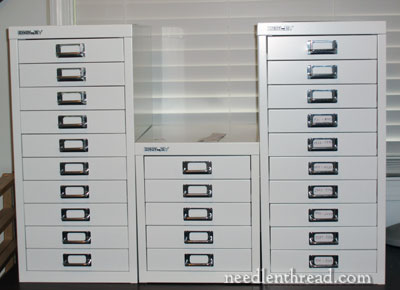 Continue reading “Embroidery Thread Storage & Organization”
Continue reading “Embroidery Thread Storage & Organization”
